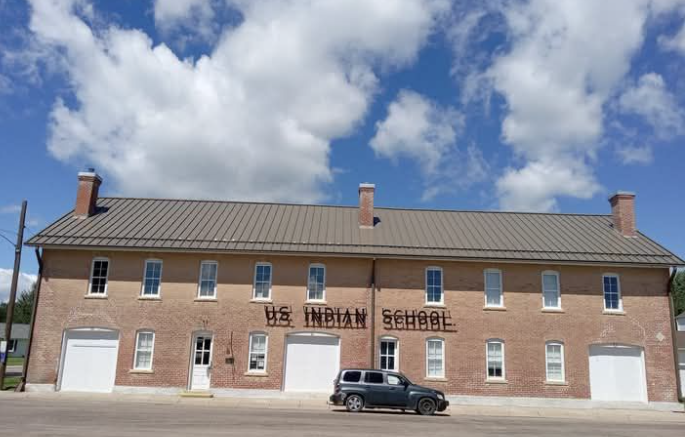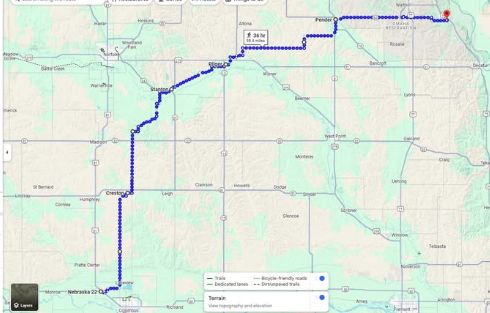
- Details
- By Kaili Berg
A 125 mile remembrance walk is underway to honor the Indigenous children who endured the federal Indian boarding school system, and especially those who passed through the former Genoa U.S. Indian Industrial School.
The Genoa Indian School Memorial Walk, organized by the Native Youth Alliance, began with a sunrise ceremony on Monday, May 12, at the site of the Genoa school and will conclude on Friday, May 23, in Macy, Nebraska, on the Omaha Reservation.
The walk traces a southern path from the former school grounds in central Nebraska to the reservation, following a mapped route with stops in communities including Monroe, Schuyler, Fremont, Uehling, and Oakland.
Participants will walk roughly 10 to 15 miles each day, stopping at pre-identified sites such as Riverland Campground, Fremont Lakes, and Uehling Gas N Go for rest and overnight camping.

Organizers say the purpose of the walk is to honor the children who were taken from their families and placed in the Genoa Indian School as part of a federal assimilation policy that operated from the late 1800s through the 1930s.
At its height, Genoa housed more than 600 Native children from dozens of tribal nations across the Plains and Great Lakes regions. Many never returned home.
The Genoa U.S. Indian Industrial School, established in 1884, was part of a national network of more than 400 Indian boarding schools designed to forcibly assimilate Native youth into white society.
Students were often stripped of their language, culture, and identity. Abuse, neglect, and disease were widespread, and hundreds of children are known to have died while enrolled.
For many walkers, the journey is both personal and communal. Some are descendants of children who attended Genoa. Others come from neighboring tribes who were similarly impacted by the boarding school era.
Organizers have also extended invitations to tribal leaders, spiritual advisors, and elders to offer prayers and teachings along the way.
The walk is open to the public, and participants are welcome to join for a day, a few miles, or the full journey. Updates are being posted on the Omaha Tribe’s official website and social media channels.
For more information, including a full map of the route and contact details, visit this website.
More Stories Like This
Native News Weekly (August 25, 2024): D.C. BriefsUS Presidents in Their Own Words Concerning American Indians
Two Murdered on Colville Indian Reservation
NDAA passes House; Lumbee Fairness Act Advances
NFL, Vikings to Host Native All-American Game, Youth Flag Clinic
Help us defend tribal sovereignty.
At Native News Online, our mission is rooted in telling the stories that strengthen sovereignty and uplift Indigenous voices — not just at year’s end, but every single day.
Because of your generosity last year, we were able to keep our reporters on the ground in tribal communities, at national gatherings and in the halls of Congress — covering the issues that matter most to Indian Country: sovereignty, culture, education, health and economic opportunity.
That support sustained us through a tough year in 2025. Now, as we look to the year ahead, we need your help right now to ensure warrior journalism remains strong — reporting that defends tribal sovereignty, amplifies Native truth, and holds power accountable.
 The stakes couldn't be higher. Your support keeps Native voices heard, Native stories told and Native sovereignty defended.
The stakes couldn't be higher. Your support keeps Native voices heard, Native stories told and Native sovereignty defended.
Stand with Warrior Journalism today.
Levi Rickert (Potawatomi), Editor & Publisher


